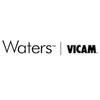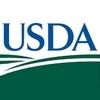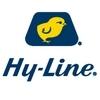Check out what is new in Poultry Industry
Find the best technical articles, forums, and videos on Poultry Industry at Engormix. Enter now and interact with the world's largest agricultural social network.
INTRODUCTION Poultry production is one of the largest sources of animal protein supply for human consumption in the world. For many countries, like Australia, chicken-meat is the dominant animal protein, therefore production must continue to expand to supply increasing demand. In Australia, for instance, per capita consumption of chicken-meat is predicted to increase by 7.9% over the next 5 years [1]. Furthermore, feed represents 65% of total chicken-meat production cost [2],...
Comments : 1
Recommendations: 2
During these difficult times facing the coronavirus outbreak, the poultry producers are acting toward the abrupt drop of broiler meat prices. Further, the reduction of chicken sales has forced some farms to decrease their poultry production. Under this circumstance, poultry farmers are increasing their biosecurity and becoming more efficient by reducing the feed cost or costs related to poultry production. One of the main questions is, how many do we need to decrease the nutrients using feed...
Comments : 6
Recommendations: 1
1. Introduction Intensive agriculture and climate change can lead to the proliferation of microscopic fungi, which can cause severe economic and health damage through their toxin production. Fusarium species infect cereals, such as wheat, barley, oats, and maize, worldwide. According to the Biomin Worldwide Mycotoxin Survey [1], the percentage of positive samples of finished feeds in Europe was 65% for deoxynivalenol (DON) with an average of 268 µg/kg (maximum: 18,300...
Comments : 0
Recommendations: 1
INTRODUCTION Soybean meal´s good amino acids (AA) balance makes it an excellent protein source in poultry diets, although it does have the disadvantage of containing antinutritional factors such as trypsin inhibitors and lectins. These can negatively affect animal growth if the SBM is not adequately processed(1) using a proper cooking time and temperature to deactivate these factors(2). Excessive heat, however, can cause Maillard reactions, destroying thermolabile AA such...
Comments : 3
Recommendations: 1
INTRODUCTION Early bacterial colonization of the intestine can alter its morphology, physiology, and susceptibility to infectious diseases (Diaz-Carrasco et al., 2019). The intestinal microbiota plays a critical role in the development and maturation of the gut and its lymphoid structures, and in the function of immune system cells (Hooper et al., 2012; Maki et al., 2019). Initial interactions between commensal bacteria and the host immune system can shape microbiota...
Comments : 0
Recommendations: 0
Sometimes chicken flocks resulted in less livability and body weight at seven days of age than other ones without knowing the reason. Besides, this reduced performance at an early age has a carryover effect until the market age. What was the cause? Probably, the lower broiler performance is mostly related to the quality of the chicks that arrive at the farms. Indeed, the broiler breeders, incubation process, or in-ovo feeding impact on chick quality. The eggshell temperature, brooding...
Comments : 0
Recommendations: 0
INTRODUCTION Eimeria spp. are the etiologic agents of avian coccidiosis, an intestinal disease responsible for an economic loss of more than $3 billion per year (1, 2). Increasing implementation of antibioticfree poultry production system in the U.S. is making the control of some enteric pathogens such as coccidiosis-causing Eimeria species and necrotic enteritis-inducing Clostridium perfringens strains challenging (3). Because coccidiosis is a primary risk...
Comments : 0
Recommendations: 2
1. Introduction In recent years, a considerable attention to essential oils (EO) as nutraceuticals in livestock production has occurred, mainly as an alternative to antibiotic growth promoters (AGPs) worldwide. Essential oils are derived from various plants as secondary metabolites with well-documented antibacterial [1], antiviral [2], antifungal [3], antioxidant [4], digestive stimulants [5], and immunomodulatory properties [6]. Some EO are used in a combination with other...
Comments : 0
Recommendations: 1
...
Comments : 0
Recommendations: 0
I. INTRODUCTION Phytogenics and probiotics are gaining more attention in the animal industries due to market trends to reduce antibiotics use, whilst still preventing disease outbreaks and maintaining, or even improving, animal performance. Phytogenics have been shown to inhibit non-beneficial, potentially pathogenic bacteria such as E. coli (Ouwehand et al., 2010, Bento et al., 2013), positively influencing the gut microbiome and inhibiting C....
Comments : 0
Recommendations: 0
I. INTRODUCTION Human consumption of chicken meat products has risen exponentially over the past five decades and continues to grow on a global scale. Thus chicken meat production has seen unparalleled expansion, to meet the continually increasing consumer demand (Allievi et al., 2015). Such expansion has resulted in the chicken meat industry being at the forefront of animal production, where advances in animal nutrition and genetics are near optimal. Therefore, producers...
Comments : 0
Recommendations: 0
One of the reasons chicken meat is considered a healthy food is due to its relatively low-fat level. Black soldier fly (BSF) larvae are a promising alternative feed ingredient for monogastrics, including poultry. However, the impact of feeding BSF larvae in broiler diets on the fatty acid profile of the breast chicken meat remains unknown. This study aimed to investigate the impact of up to 20% BSF larvae dietary inclusion on the fatty acid profile of meat chicken breast meat when fed until...
Comments : 0
Recommendations: 0


Mycotoxin Testing in the Feed Chain: A Risk Prevention Strategy for Raw Material Suppliers, Grain Storage Facilities and Processors, and Feed Manufacturers
Suggested link
Poultry rely on enzymatic digestion more so than any other livestock species due to their very short digesta transit time and because their large intestines lack the bacteria that aids other species in digestion. Because of this, their ability to digest nutrients in the feed is not absolute. Recently, along with phytase and non-starch polysaccharide-degrading enzymes, protease has become a standard component in broiler diets to improve nutrient digestibility and utilization. However, there...
Comments : 0
Recommendations: 1
I. INTRODUCTION While the inclusion of feed enzymes is routine in poultry fed sorghum-based diets, the effects of these enzymes are often muted or substandard, especially with phytase (Selle et al., 2018). The exact mechanism for this underperformance is not known, however, it is most likely caused by one or all of three key endogenous grain components: kafirin, phytate and phenolic compounds. Phenolic compounds,...
Comments : 0
Recommendations: 0
I. INTRODUCTION The inclusion of exogenous phytases in diets for broiler chickens has developed into a routine practice because of their positive phosphoric and extra-phosphoric effects. On one hand, phytase liberates phytate-bound phosphorus (PP) which is found in all plant-sourced feedstuffs as the dominant P fraction. On the other, phytase enhances amino acid (AA) digestibilities, essentially because they...
Comments : 0
Recommendations: 0
I. INTRODUCTION The AgriFutures Australia Chicken Meat Program funds research, development and extension activities for the benefit of the Australian chicken meat industry. Through the process of reviewing the 5-year strategic plan (RIRDC, 2014), the objectives were adjusted to align each objective with a stage of chicken meat production. This included the consolidation of all research related to the live chicken...
Comments : 0
Recommendations: 0
Feed represents the primary cost of broiler production, thus the formulation of cost-effective diets that meet broiler nutritional requirements is critical. To ensure this objective is met, nutrient specifications of feed ingredients must be accurately determined. However, Australian broiler nutritionists have expressed concern, as many nutrient specification databases contain dated information or lack Australian specific data. Therefore, the aim of this project was to compile current...
Comments : 0
Recommendations: 0
I. INTRODUCTION Estimating the available energy of feed ingredients is fundamental to formulating a well-balanced diet and lower the production cost. Measurement of apparent metabolisable energy (AME) is the accepted standard procedure for evaluating the available energy value of ingredients for poultry, as it is simple and straightforward and considers most of the energy losses after digestion and metabolism (Carré et...
Comments : 0
Recommendations: 0
I. INTRODUCTION Cereal grains are ground prior to feed mixing to reduce the particle size with the aim of modifying their physical characteristics. This facilitates handling, mixing and further processing (extrusion and pelleting) and increases the exposure of nutrients in the endosperm to digestive enzymes (Amerah et al., 2011). Available recommendations regarding optimum particle size are contradictory, due to...
Comments : 0
Recommendations: 1
Copper (Cu) is a vital element involved in various physiological and biochemical processes, namely cellular metabolism and enzyme systems. Higher levels of copper than nutritional requirements (up to 250 mg/kg) are supplemented to poultry diets. However, if in excess, excreted Cu can contaminate the environment. High levels of copper sulphate (CuSO 4 ) may damage other dietary nutrients through increased oxidation. Meanwhile, copper hydroxychloride (IBC) is less soluble than...
Comments : 0
Recommendations: 0


.jpg&w=3840&q=75)




















.jpg&w=3840&q=75)














